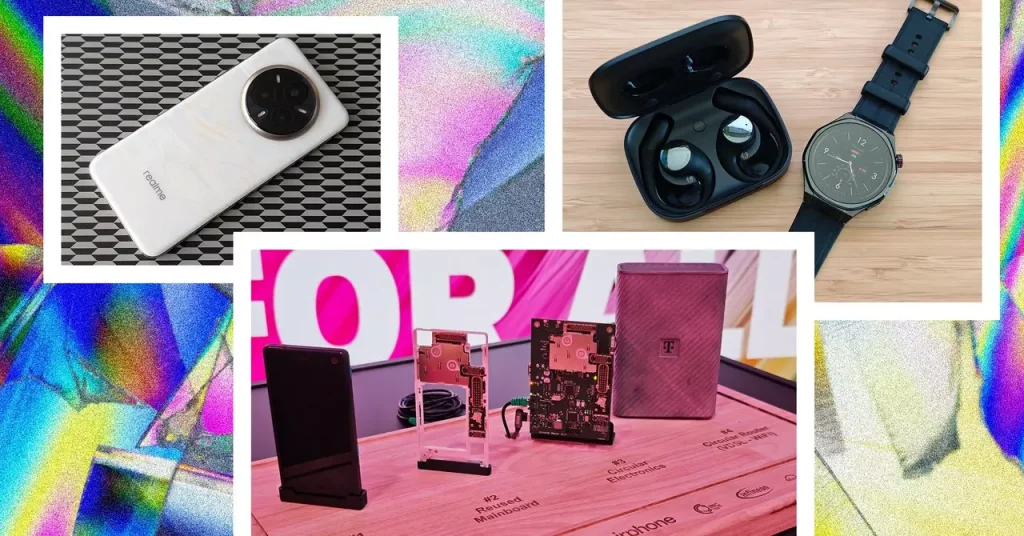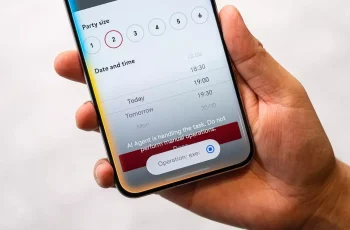The Mobile World Congress (MWC) may not command the same aura of exclusivity as it once did, but it remains a pivotal event for mobile technology enthusiasts. Held annually in the vibrant streets of Barcelona, MWC 2025 showcased a diverse spectrum of innovations, extending far beyond mere smartphone releases. The essence of this year’s event revolved around creativity in design, artificial intelligence (AI), and the integration of smart tech into our everyday lives—presenting not just a mirage of what’s to come, but a concrete reflection of our current digital ecosystem.

One cannot overlook the evolution of MWC, as it transitions from a launch pad for flagship phones into a melting pot for diverse technological novelties. The absence of major flagship releases was palpable, yet some brands made headlines with their ambitious advancements and novel concepts that captured attention.
At the forefront of this year’s MWC was Xiaomi, a brand whose presence loomed large with the debut of the Xiaomi 15 and 15 Ultra. These devices shone like diamonds in the rough, offering cutting-edge features and remarkable performance ardently deserving of recognition. With pricing starting at £849 (999 euros) for the Xiaomi 15 and going up to £1,299 (1,499 euros) for the Ultra, the devices are not merely purchases; they represent an investment into future-oriented technology.
The standout features of these smartphones include vibrant displays, commendable battery life, and rapid charging capabilities that are bound to enchant die-hard tech enthusiasts. However, it’s Xiaomi’s HyperOS 2—an operating system enriched with AI features—that truly sets it apart. The integration of AI into the user experience is a signal that Xiaomi is not just following trends but shaping them. Although these offerings remain unavailable in the US market, their impact is felt strongly across Europe and the UK, illuminating a landscape ripe for innovation.
Xiaomi also paraded an impressive range of auxiliary products—from Android tablets boasting 11.2-inch displays to advanced earbuds equipped with AI transcription and translation capabilities. The cohesive ecosystem articulated by Xiaomi suggests a concerted effort to interlink various tech devices, reflecting a holistic vision rather than isolated advancements.
As Xiaomi basked in the limelight, competitor Nothing also embraced the spotlight with the unveiling of their Phone (3a) and Phone (3a) Pro models. Priced attractively at $379 and $459 respectively, these smartphones stand as testaments to affordability married with functionality. The Pro version boasts a 50-megapixel main camera paired with a 3X optical periscope lens, aiming to elevate mobile photography without subduing the budget.
Not merely done with aesthetics, Nothing has employed a design philosophy that diverges from mainstream conventions, opting for a distinctive look that caters to younger, tech-savvy consumers. While flagship phones are often associated with exorbitant price tags, Nothing’s models challenge this notion, emphasizing the potential for high-quality performance within a more accessible price range. This strategic approach positions Nothing as a formidable contender in a saturated market.
The dialogue at MWC 2025 extended well beyond hardware; it was marked by a fervent integration of artificial intelligence across various platforms. The move toward intelligent devices, from smartphones to smart home gadgets, signals an era where machines not only respond to commands but also anticipate users’ needs—promising a seamless blend of technology into everyday experiences.
This commitment to AI wasn’t just limited to a few standout products; it permeated discussions and demonstrations, which highlighted experiences that leverage machine learning for improved user engagement. Whether through voice-assisted commands, contextual responses, or real-time translations, the potential applications of AI extended hope for a richer, more intuitive interaction between humans and machines.
As the world pivots toward a more interconnected future, MWC serves as a reminder that innovation is not merely about competition; it’s about collaboration and the collective push towards a smarter, more versatile technological landscape. Each brand showcased at this year’s congress contributed a unique narrative to the overarching theme of evolution—a tapestry woven with ambition, creativity, and the relentless pursuit of advancement.
Beyond the smartphones and gadgets, the integration of AI at MWC 2025 highlighted its potential to transform industries. Smart home devices showcased how AI could enhance everyday living, offering personalized experiences that adapt to user behavior. From energy-efficient lighting systems to security solutions that learn and predict potential threats, the application of AI in home automation was a major focus.
The automotive sector also saw significant AI-driven innovations. Concepts of autonomous vehicles and AI-assisted driving systems were prevalent, demonstrating how AI could revolutionize transportation. These technologies promise to enhance safety, improve traffic efficiency, and provide a more comfortable driving experience.
Moreover, the healthcare industry benefited from AI advancements showcased at MWC. From AI-driven diagnostic tools to personalized health monitoring systems, the potential for improving patient care and health outcomes was evident. These technologies aim to provide more accurate diagnoses, streamline treatment processes, and empower patients with more control over their health data.
Education was another sector where AI showed promise. Interactive learning platforms and AI tutors were demonstrated, offering personalized learning experiences that adapt to individual student needs. These tools have the potential to revolutionize education by making learning more engaging and accessible to a diverse range of students.

In conclusion, MWC 2025 was a celebration of innovation, highlighting the transformative power of AI across various sectors. As brands continue to push the boundaries of what’s possible, the integration of AI into our daily lives becomes increasingly seamless. The event underscored the importance of collaboration and creativity in driving technological advancements, setting the stage for a future where AI and technology are intricately woven into the fabric of society.


